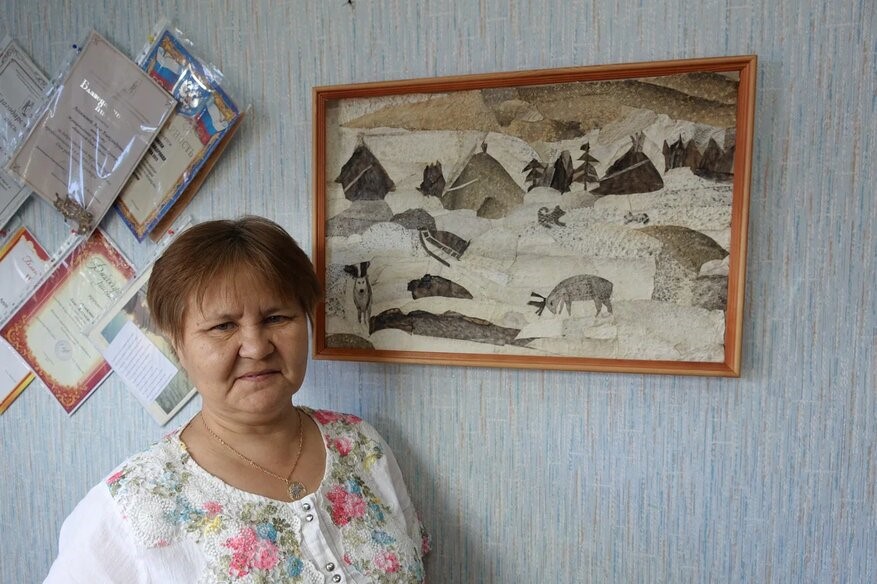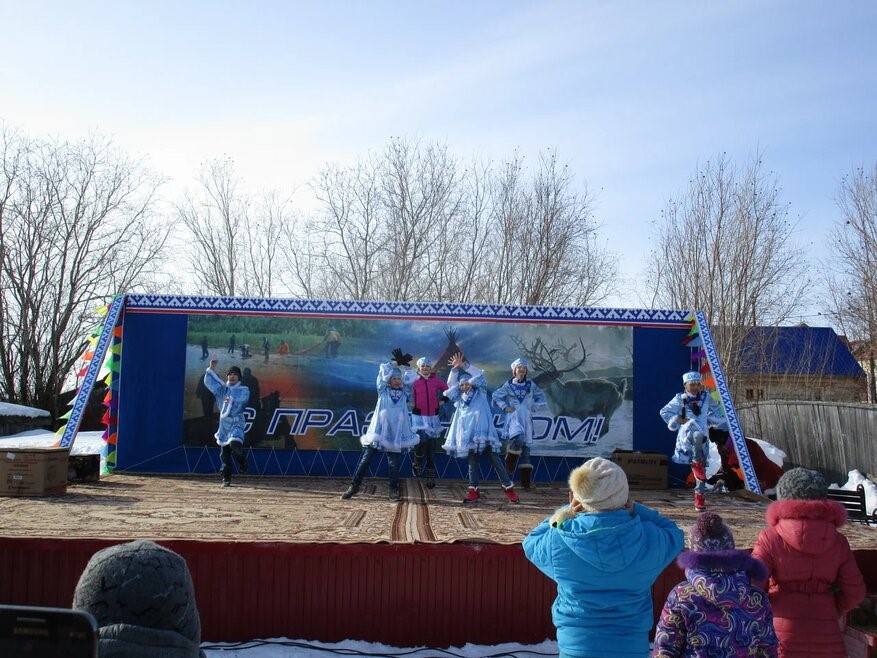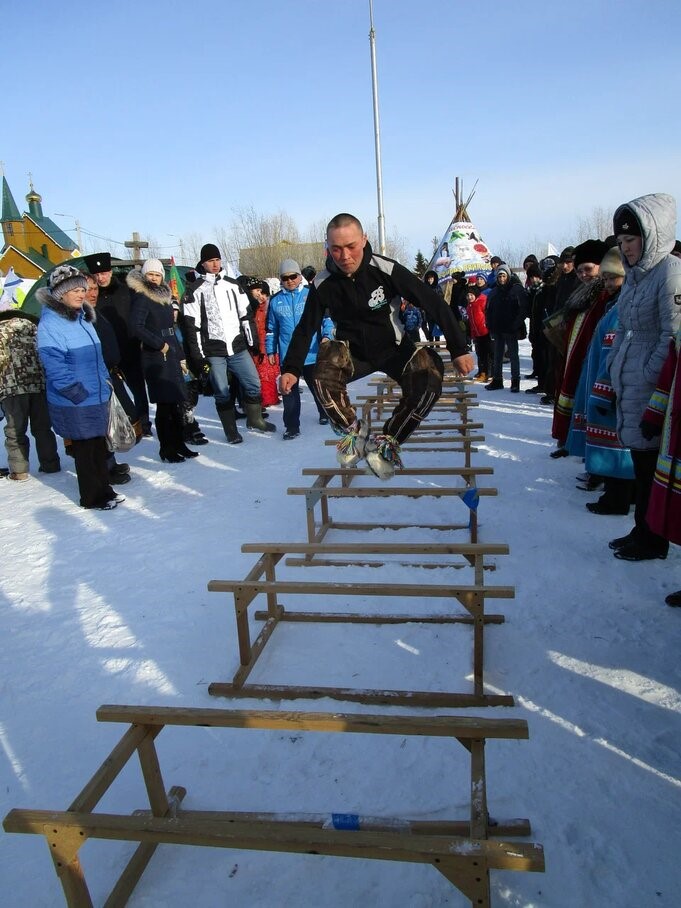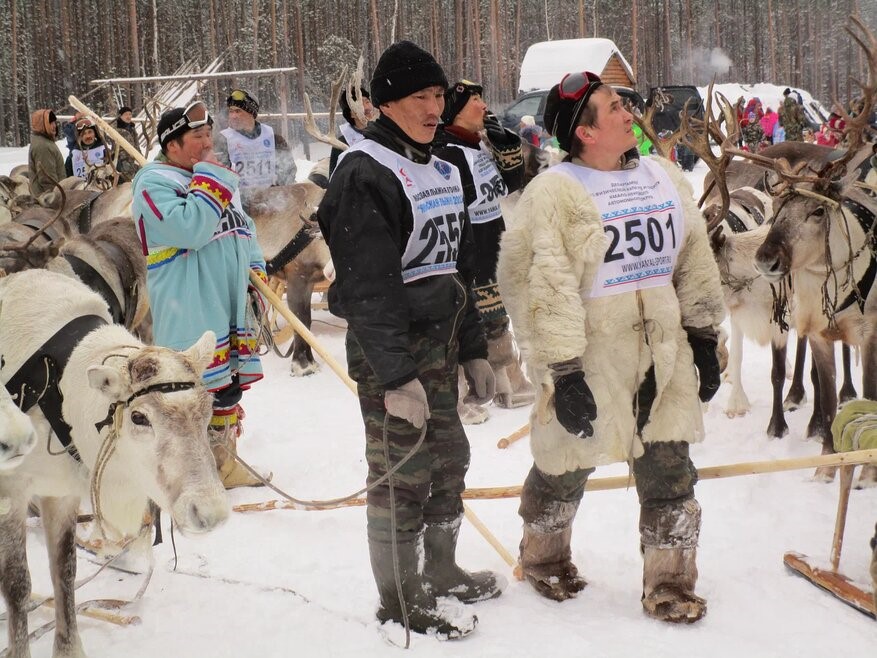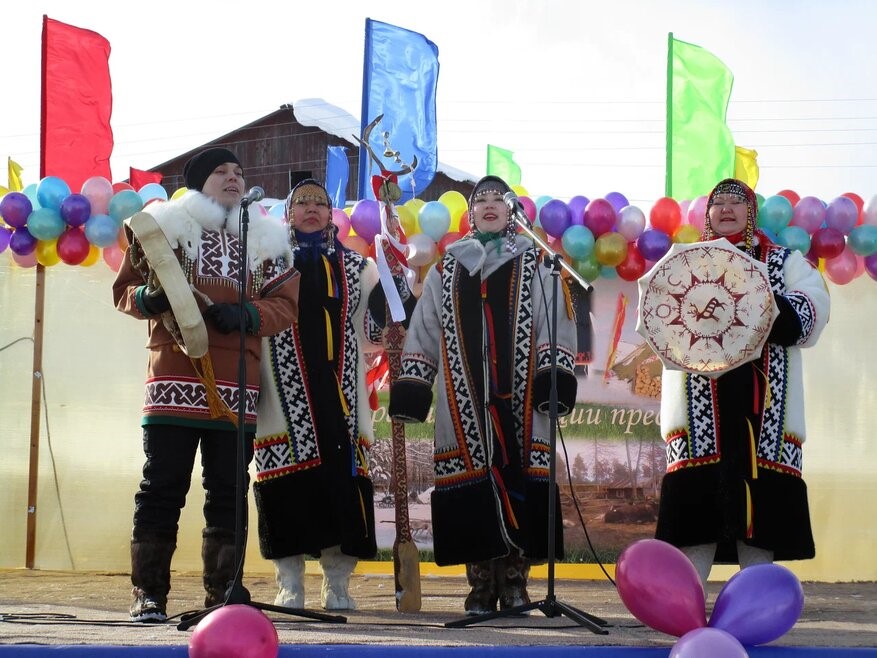|
|
Dr. Stepanova
Senior Research Fellow, Department of Ethnography of Siberia, Museum of Anthropology and Ethnography, Russian Academy of Sciences
|
Selkups. Modern Culture and Crafts, Folklore Groups, Professional Art
Today’s Northern Selkups have preserved a part of their ancient worldview in their spiritual culture. Over the last decade, scholars recorded several folklore stories told by old Selkup storytellers. When interviewed by scholars, middle-aged Selkups demonstrated good knowledge of traditional beliefs, while elementary school students knew very few of the most popular Selkup fairy tales. The bear paw divination rite held upon the killing of a bear remains mandatory for Selkups adhering to the traditional lifestyle; in spring, some families still hold the rite of meeting migratory birds. Another manifestation of Selkups keeping their traditions is their widespread belief in spirits. Today, Selkups are genuinely afraid of the dead (cemeteries in Selkup villages are located close to houses) that allegedly leave their graves at night and visit the living to harm them. They place sharp objects (knives, axes, and hacksaw blades) under thresholds as protection against the dead. Tales of the dead are the most numerous in today’s Selkup folklore. Selkups’ fear of the dead spread to the local Russian population as well. Selkups and other district residents are equally afraid both of the dead and of old abandoned porges, or ancestor images cut into trees, that still can be encountered in the forest during a hunt or when collecting berries; sometimes, they can be seen on sunken logs.
Each Selkup family used to have its own shaman and collections of shamanic paraphernalia were passed down from generation to generation. These paraphernalia were believed to be inhabited by immortal spirits and as such demanded respect and needed to be handled in a special manner. Strangers and children were strictly prohibited from approaching these items as the spirits were hostile to strangers and did not like to be troubled by children’s pranks; the spirits always punished their offenders, i.e. those who broke the rules. When shamans became a thing of the past, keepers who were normally the oldest men in a given family were entrusted with protecting their relatives from the spirits’ wrath. If a keeper was growing old and had no one to pass his duties to, he would take the items into the forest and leave them there forever. Some of today’s keepers would like to get rid of the dangerous relics, for instance, by burying them, but the “rules” forbid it. Families that still have shamanic paraphernalia refuse to give them to museums and show them to scholars; talking about their contents is also prohibited. Selkups attribute all accidental and premature deaths, misfortunes, and troubles to punishment from the spirits for breaking the rules set by ancestors.
Today, Reindeer Herder Day is Northern Selkups' favorite holiday. The so-called Fishermen Day attracts fewer celebrants but is more widespread. The Reindeer Herder Day is celebrated with a reindeer- driven sled race; Selkups spend months training their reindeer specifically for this race. Different teams (for instance, personnel from a boarding school or a hospital, or natives of the Bolshaya Shirta River area) set up their chums at the field where the celebration is held, cook ethnic dishes, and offer them first to the judges of the best chum competition and then to all those who came to the celebration. Village administrations and sponsors award winners with expensive gifts; the best workers of agroindustiral enterprises also receive awards at that celebration. All villagers, regardless of ethnic origins, participate in those celebrations. Locals and guests entertain the audience while singing and dancing. Lately, the Welcoming Migratory Birds Selkup Festival (Duck Arrival Day) has been transformed into a pan-Selkup holiday, but so far, it is celebrated by a narrow circle of people. As for Russian national holidays, Selkups enjoy celebrating the New Year.
The Krasnoselkup and Pur District Local Museums have unique collections dedicated to the traditional cultures of the indigenous peoples of Siberia. These collections are curated by people of indigenous origins. The museums are actively involved in all culture-related events in the district and in educational activities with groups of school students and retirees living in the district’s administrative centers. The Turukhansk Local Museum's collection is on par with those of the Krasnoselkup and Pur Museums.
Well-equipped Krasnoselkup and Tolka crafts centers allow artisans to create art using different kinds of beads, fabric, birch bark, wood, and bone. Ethnically, the carvers do not usually belong to indigenous Siberian people, and master needle-women and bead-weavers do not always work in the purely Selkup tradition. Yet, Selkups hold work in crafts centers in high esteem, and many of them would like to be working there. Craft centers often hold exhibitions that do not involve sales of their goods; instead, items are given as gifts to high-ranking guests.
Back in the Soviet era, methodology experts at ethnic culture centers (the Ethnic Selkup Culture Center in Krasnoselkup) collected ethnic folklore. The ECS also manufactured various souvenirs, for example, authentic ethnic dolls, and items related to ethnic Selkup culture. The ECS’s set up their chum at the Reindeer Herder Day, the Fishermen Day, the District Day, and therein they exhibit their crafts and treat guests to ethnic cuisine. The ECS’s celebrate ethnic holidays, such as the Migratory Birds Arrival Day or the Raven Day, by performing mini-plays at their premises. Selkup-themed fairy tale shows are also staged at the boarding school of the Tolka village where activist teachers and their students launched their own artistically designed Selkup culture museum with exhibits and information posters. The Museum’s founder and first director, I.V. Petrova, an ethnic Selkup, a teacher of the Yamal Peoples’ History, composed Selkup fairy tales for working with children. Her syllabus entailed children writing their genealogies and essays on famous Selkups.
The Krasnoselkup ESCS is launching ethnic music ensembles, such as the folklore Selkup band Kentyya widely famous in the district. Recently, the Machit Koymy (Song of the Taiga) band was established in Salekhard; it also has two natives of the Tolka village (a Taz settlement), and they include throat singing and animal sounds into their performances, neither of which is typical of the Selkup music tradition.
Recently, the Krasnoselkup district has celebrated Victory Day with a “Choir Battle” song competition, and all the people in the district, including Selkups, are very active therein, regardless of their singing abilities. All three villages in the district send their competitors to the battle.
The Pur ECS also has an ethnic band of young and dynamic entertainers who regularly perform at the local community center.
Selkups’ modern dance cannot be called traditional. All dances that ensembles perform at celebrations and holidays are positioned as dances with ethnic elements without claiming to reproduce traditional dances. Performers use movements created by Soviet choreographers for Sera-Sev, the famous Nenets dance ensemble. Other forms are not widespread for traditional Selkup dances are completely forgotten.
For the last few several decades , radio and TV in the Krasnoselkup District featured a program teaching the Selkup language to children, and the area’s TV channel also released a series on the ethnic Selkup cuisine.
The modern art of Narym Selkups is similar to that of the Selkups from the Yamal-Nenets autonomous area. The Tomsk region also has craft shops, and folklore ensembles. It celebrates a few holidays (such as the Big Fish holiday and Meeting Spring Birds festival), and their output constitutes a new form of ethnic culture. However, the development of indigenous art in the Tomsk region faces a few obstacles. For example, the ethnic art of Southern Selkups is a grassroots enterprise, and activists receive very little assistance from the state. Assistance is granted on a competitive basis. Having lost their living tradition, Southern Selkups are developing new forms of ethnic expression to reaffirm and revive their identity, while Northern Selkups so far get more support for their creative effort is mostly designed and funded by local authorities.
